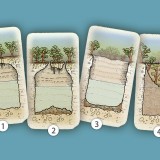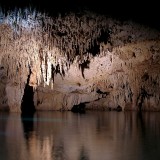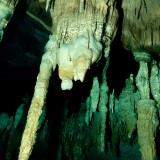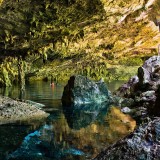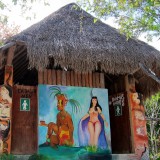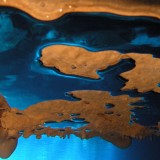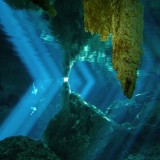loading
West Eye
Cenote Dos Ojos (two eyes) was given this name because when these two circular cenotes are seen from above amidst the jungle, they look like two eyes. It’s the third longest underground river in the world measuring more than 82 kms. in length and with 28 explored cenotes. (Foto: Fisheye)
The “Bat Cave”
| The constant, age-old drip of water leaves behind mineral deposits that grow forming stalactites and upon dripping, form stalagmites. The Bat Cave is one such example. (Foto: Fisheye) |
Fisheye Shop
| Hire your own personal underwater photographer for scuba diving or snorkeling. They have specialized equipment and years of experience. (Foto: Fisheye) |
The Pit
| The Pit is the deepest cenote in the Dos Ojos System and of all of Quintana Roo, with a maximum depth of 120 meters. Scuba diving is practiced in a spectacular ray of light that at 30 meters lights up a cloud of hydrogen sulfur giving it a magical feel. (Foto: Fisheye) |
Nature
(Foto: Fisheye)
Prehistory Museum
During the glacial period, cenotes were dry caves used by both humans and animals; when the melting started, sea levels rose and flooded those shelters, which turned them into "time capsules" where animal and human fossils have been found dating back 10 thousand years.
Introduction Dos Ojos
| Cenote Dos Ojos is one of the favorites among scuba divers because of the clarity of its waters, spectacular formations and the possibility of doing two different dives: the Barbie Line, 500 mts. long, and the Bat Cave Line, 450 mts. long, with a maximum depth of 10 mts. and with a temperature of 24°C (75°F).
Origin
In the Yucatan Peninsula, the water subtly seeps through the limestone rock, filtering drop by drop, creating whimsical geological formations on its way down, and giving way to the cenotes and underground rivers in search of an outlet to the sea. There are several kinds of cenotes, formed over time.
The Maya
The Word "Cenote" comes from the Mayan Word "tz’onot," which means sacred well. In Mayan cosmogony, cenotes were the gateway to Xibalbá, the underworld of the dead where life continued on, as in the legendary Mayan writing, the Popol Vuh. |
